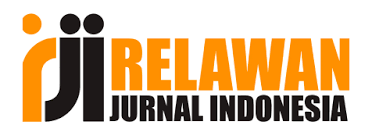Typology
Keywords:
tipology, traditional tipology, cognitive tipology, isomorphic, allomorphic, semantics, dominant, recessive
Abstract
In this article the main types of tipology is discussed in different examples. In addition to this types of typology are compared through examples of written and spoken languages.
References
1. Comrie, B. (1989). Language universals and linguistic typology: Syntax and morphology. Oxford: Blackwell, 2nd edn. ISBN 0-226-11433-3.
2. Croft, W. (2002). Typology and universals. Cambridge: Cambridge UP. 2nd ed. ISBN 0-521-00499-3.
3. Cysouw, M. (2005). Quantitative methods in typology. Quantitative linguistics: an international handbook, ed. by Gabriel Altmann, Reinhard Köhler and R. Piotrowski. Berlin: Mouton de Gruyter. ISBN 3-11-015578-8.
4. Grijzenhout, J. (2009). Phonological domains : universals and deviations. Berlin; New York: Mouton de Gruyter. ISBN 3-110-20540-8.
5. Moravcsik, Edith A. (2013). Introducing language typology. Cambridge: Cambridge University Press.
6. Nichols, J. (1992). Linguistic diversity in space and time. Chicago: University of Chicago Press. ISBN 0-226-58057-1.
7. Nichols, J. (2007). What, if anything, is typology?Linguistic Typology. Volume 11, Issue 1, Pages 231–238, ISSN (Online) 1613-415X, ISSN (Print) 1430–0532, doi:10.1515/LINGTY.2007.017, July 2007
8. Song, J.J. (2001). Linguistic typology: Morphology and syntax. Harlow and London: Pearson Education (Longman). ISBN 0-582-31220-5.
9. Song, J.J. (ed.) (2011). The Oxford Handbook of Linguistic Typology. Oxford: Oxford University Press. ISBN 978-0-19-928125-1.
10. Whaley, L.J. (1997). Introduction to typology: The unity and diversity of language. Newbury Park: Sage. ISBN 0-8039-5963-X.
11. Turdimatova Madinakhan Ravshanovna. (2022). THE PERCEPTIVE MEANING IN VERBAL IRONY. E Conference Zone, 19–21. Retrieved from http://econferencezone.org/index.php/ecz/article/view/295.
12. Turdimatova Madinakhon Ravshanovna. DIFFERENT TYPES OF IRONY IN LITERATURE.Vol. 3 No. 4 (2022): wos.Web of Scientist: International Scientific Research Journal https://wos.academiascience.org/index.php/wos/article/view/1234
13. Abdulakhatovna, K. R. (2022). LANGUAGE ACQUISITION. ASIA PACIFIC JOURNAL OF MARKETING & MANAGEMENT REVIEW ISSN: 2319-2836 Impact Factor: 7.603, 11(10), 113-118.
14. Abdulakhatovna, K. R. (2022). DIPLOMATIC DISCOURSE. Web of Scientist: International Scientific Research Journal, 3(5), 18-22.
15. Abdulaxatovna, X. R. (2022). ABRAHAM LINKOLN IBORALARINING MISOLIDA NUTQNING PSIXOLINGVISTIK KO ‘RINISHI. BARQARORLIK VA YETAKCHI TADQIQOTLAR ONLAYN ILMIY JURNALI, 2(10), 413-416.
16. Abdulakhatovna, K. R. (2022). THE NOTION SPEECH ACTS AND ANALYSES OF THE WORK “A CUP OF TEA” BY KATHERINE MANSFIELD. INTERNATIONAL JOURNAL OF SOCIAL SCIENCE & INTERDISCIPLINARY RESEARCH ISSN: 2277-3630 Impact factor: 7.429, 11(08), 135-140.
2. Croft, W. (2002). Typology and universals. Cambridge: Cambridge UP. 2nd ed. ISBN 0-521-00499-3.
3. Cysouw, M. (2005). Quantitative methods in typology. Quantitative linguistics: an international handbook, ed. by Gabriel Altmann, Reinhard Köhler and R. Piotrowski. Berlin: Mouton de Gruyter. ISBN 3-11-015578-8.
4. Grijzenhout, J. (2009). Phonological domains : universals and deviations. Berlin; New York: Mouton de Gruyter. ISBN 3-110-20540-8.
5. Moravcsik, Edith A. (2013). Introducing language typology. Cambridge: Cambridge University Press.
6. Nichols, J. (1992). Linguistic diversity in space and time. Chicago: University of Chicago Press. ISBN 0-226-58057-1.
7. Nichols, J. (2007). What, if anything, is typology?Linguistic Typology. Volume 11, Issue 1, Pages 231–238, ISSN (Online) 1613-415X, ISSN (Print) 1430–0532, doi:10.1515/LINGTY.2007.017, July 2007
8. Song, J.J. (2001). Linguistic typology: Morphology and syntax. Harlow and London: Pearson Education (Longman). ISBN 0-582-31220-5.
9. Song, J.J. (ed.) (2011). The Oxford Handbook of Linguistic Typology. Oxford: Oxford University Press. ISBN 978-0-19-928125-1.
10. Whaley, L.J. (1997). Introduction to typology: The unity and diversity of language. Newbury Park: Sage. ISBN 0-8039-5963-X.
11. Turdimatova Madinakhan Ravshanovna. (2022). THE PERCEPTIVE MEANING IN VERBAL IRONY. E Conference Zone, 19–21. Retrieved from http://econferencezone.org/index.php/ecz/article/view/295.
12. Turdimatova Madinakhon Ravshanovna. DIFFERENT TYPES OF IRONY IN LITERATURE.Vol. 3 No. 4 (2022): wos.Web of Scientist: International Scientific Research Journal https://wos.academiascience.org/index.php/wos/article/view/1234
13. Abdulakhatovna, K. R. (2022). LANGUAGE ACQUISITION. ASIA PACIFIC JOURNAL OF MARKETING & MANAGEMENT REVIEW ISSN: 2319-2836 Impact Factor: 7.603, 11(10), 113-118.
14. Abdulakhatovna, K. R. (2022). DIPLOMATIC DISCOURSE. Web of Scientist: International Scientific Research Journal, 3(5), 18-22.
15. Abdulaxatovna, X. R. (2022). ABRAHAM LINKOLN IBORALARINING MISOLIDA NUTQNING PSIXOLINGVISTIK KO ‘RINISHI. BARQARORLIK VA YETAKCHI TADQIQOTLAR ONLAYN ILMIY JURNALI, 2(10), 413-416.
16. Abdulakhatovna, K. R. (2022). THE NOTION SPEECH ACTS AND ANALYSES OF THE WORK “A CUP OF TEA” BY KATHERINE MANSFIELD. INTERNATIONAL JOURNAL OF SOCIAL SCIENCE & INTERDISCIPLINARY RESEARCH ISSN: 2277-3630 Impact factor: 7.429, 11(08), 135-140.
Published
2022-12-16
How to Cite
Ravshanovna, T. M., & Abdulakhatovna, K. R. (2022). Typology. Central Asian Journal of Literature, Philosophy and Culture, 3(12), 101-107. https://doi.org/10.51699/cajlpc.v3i12.648
Section
Articles

















